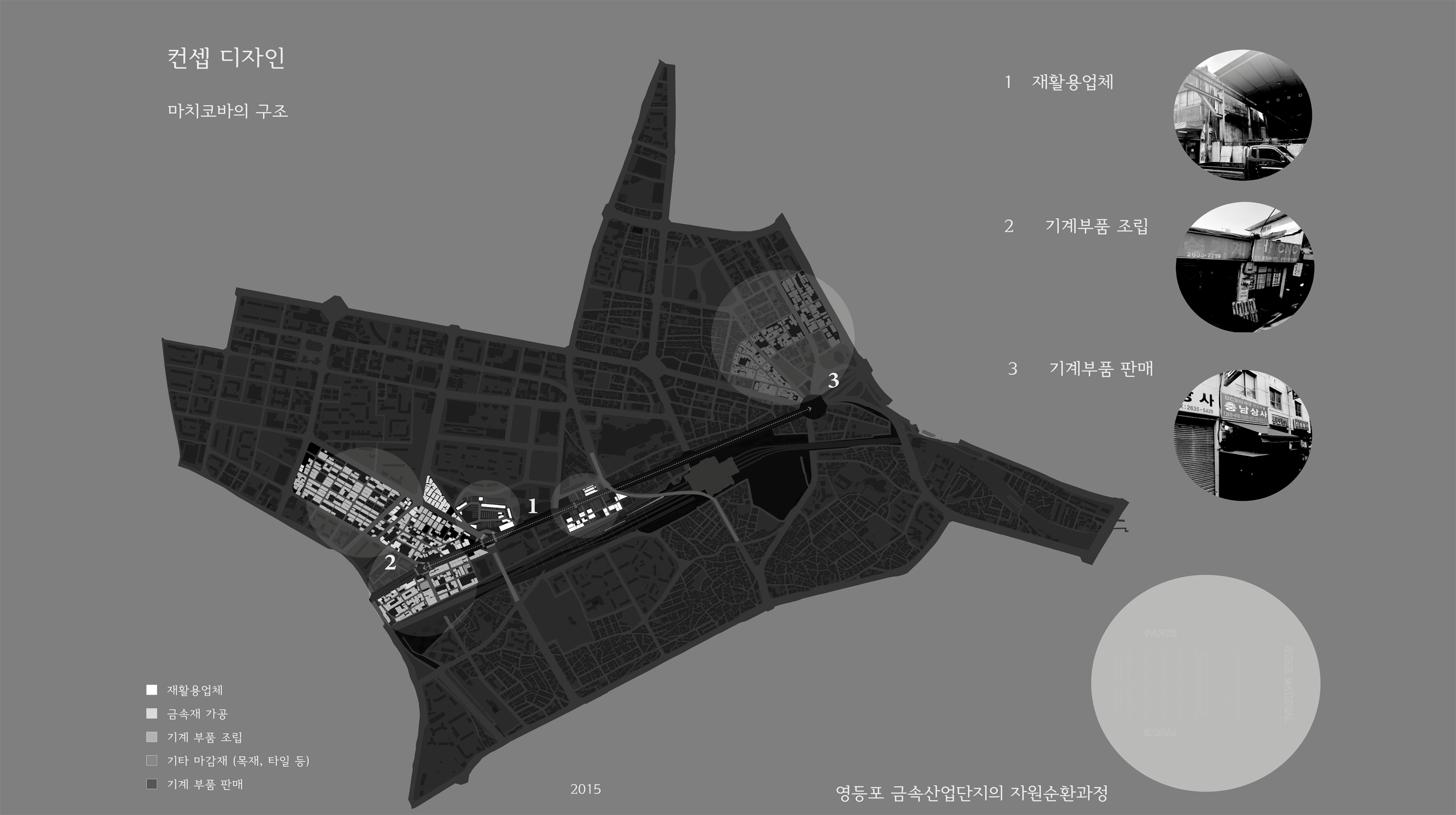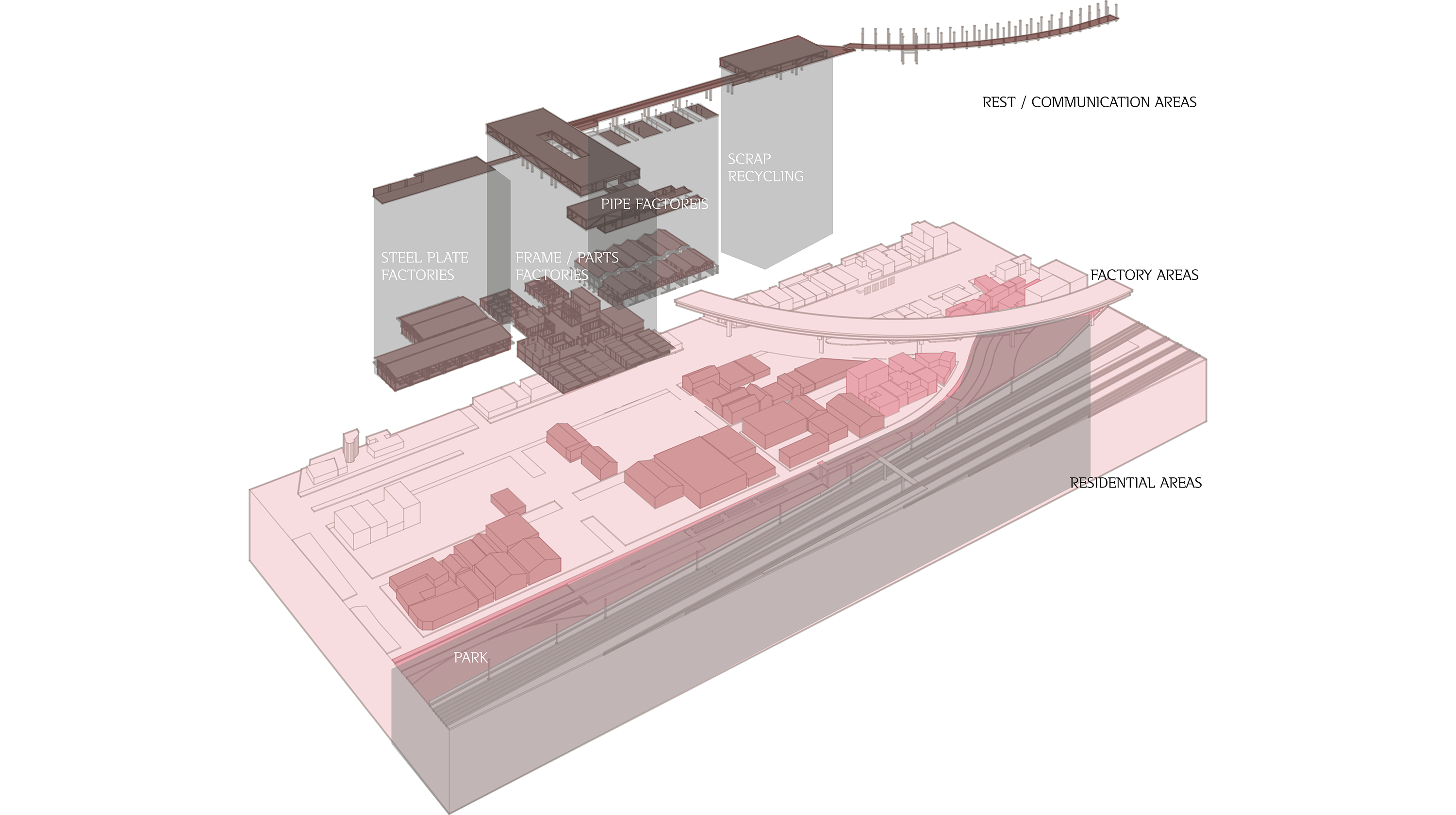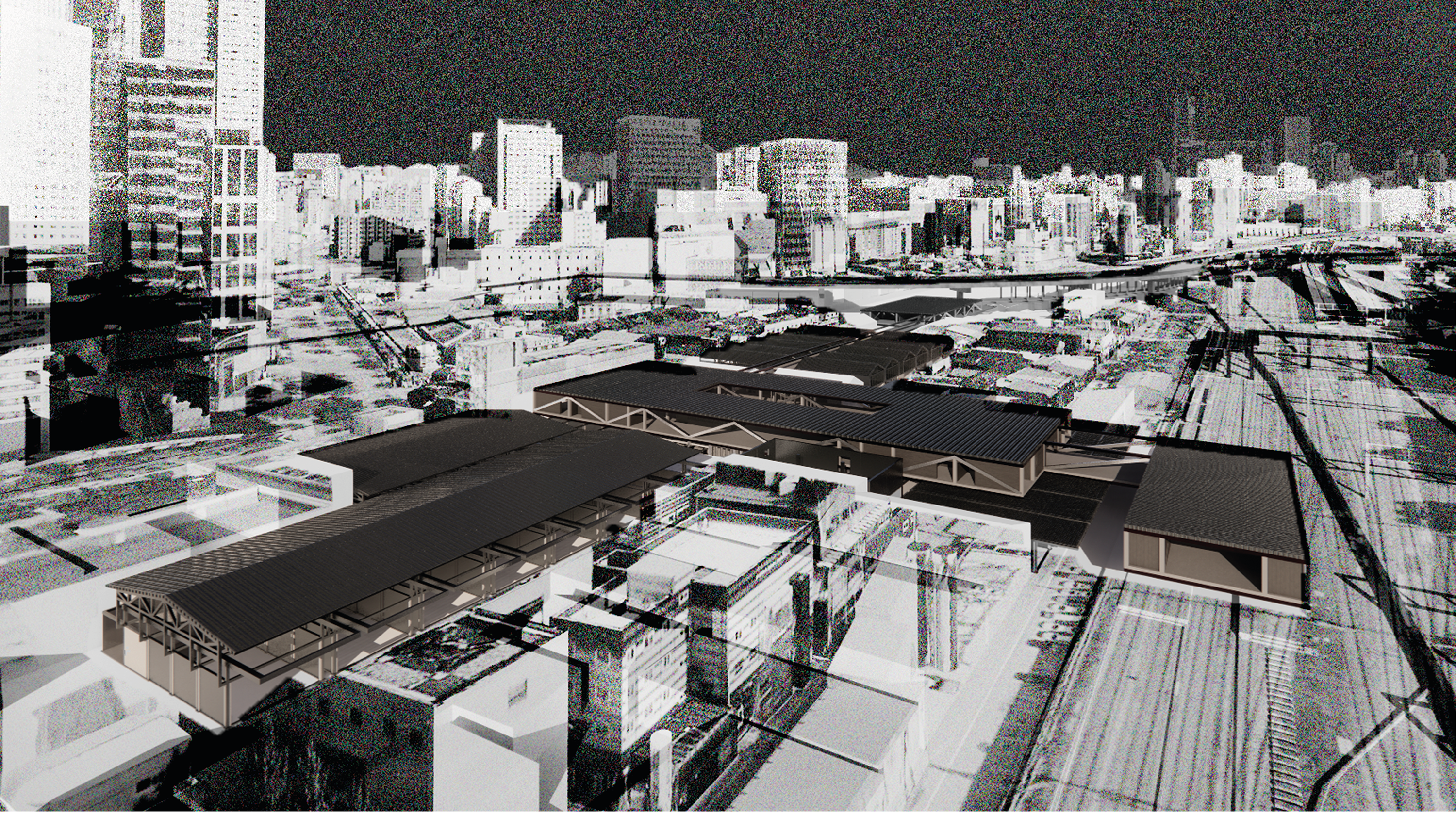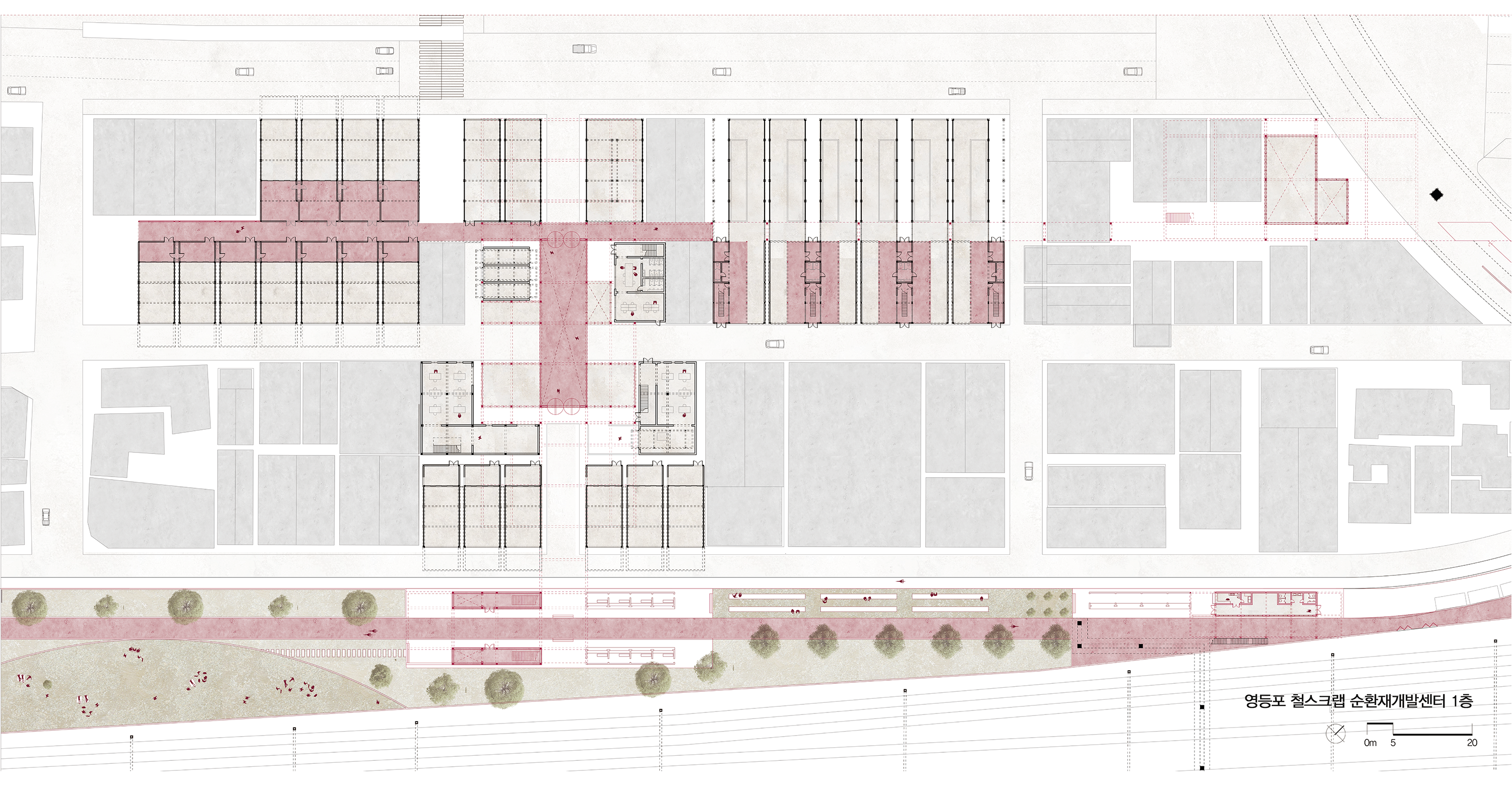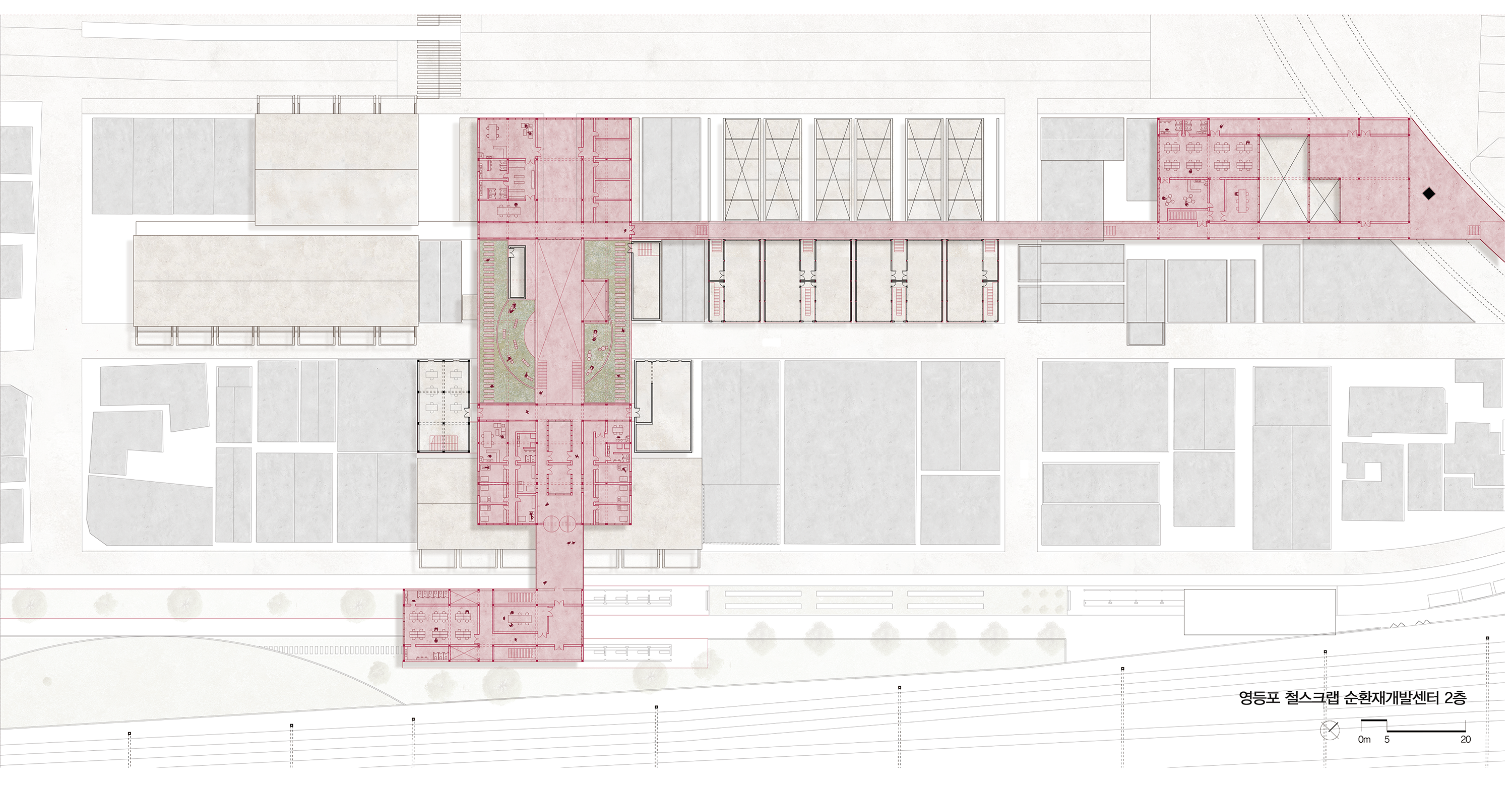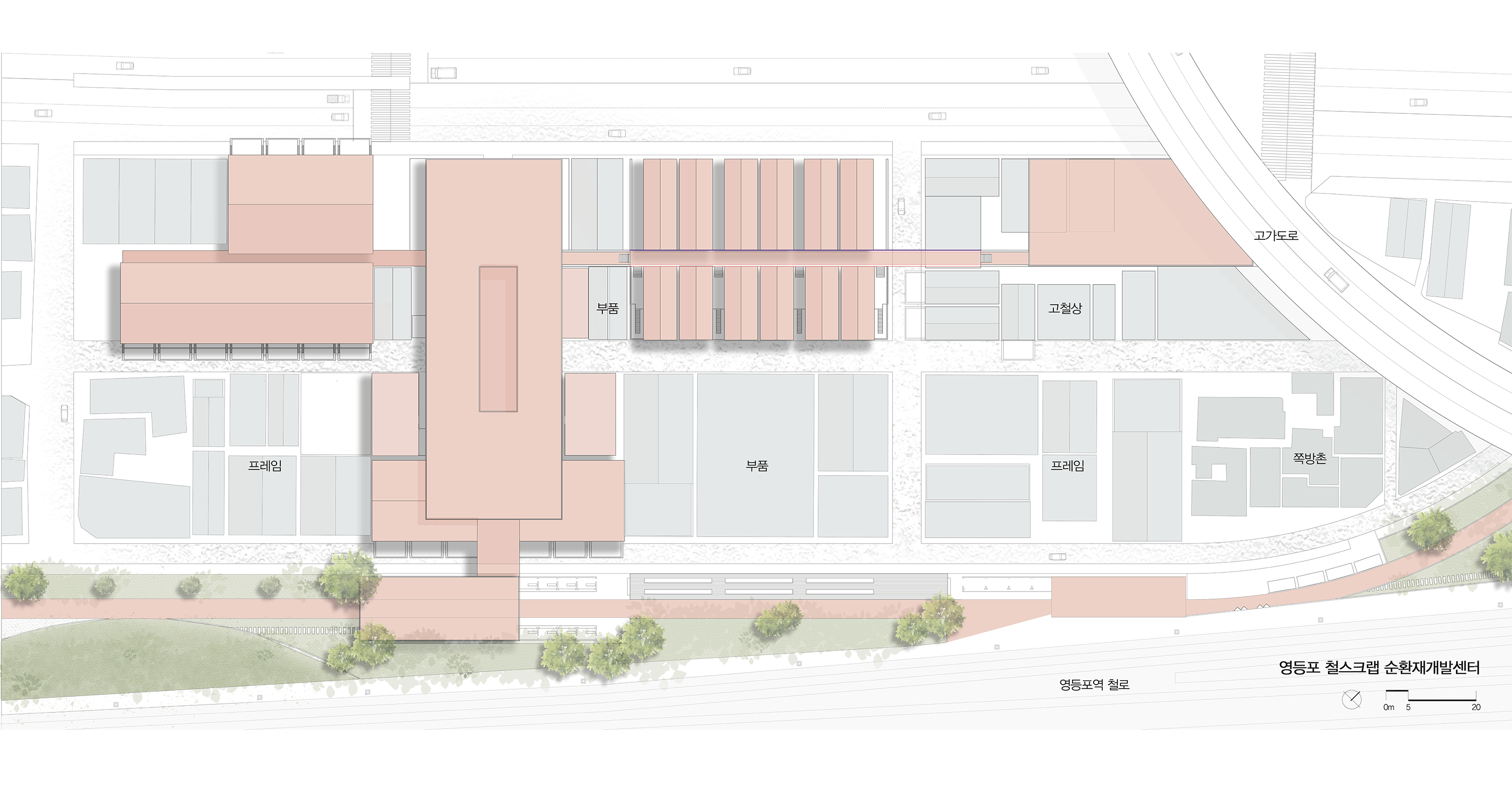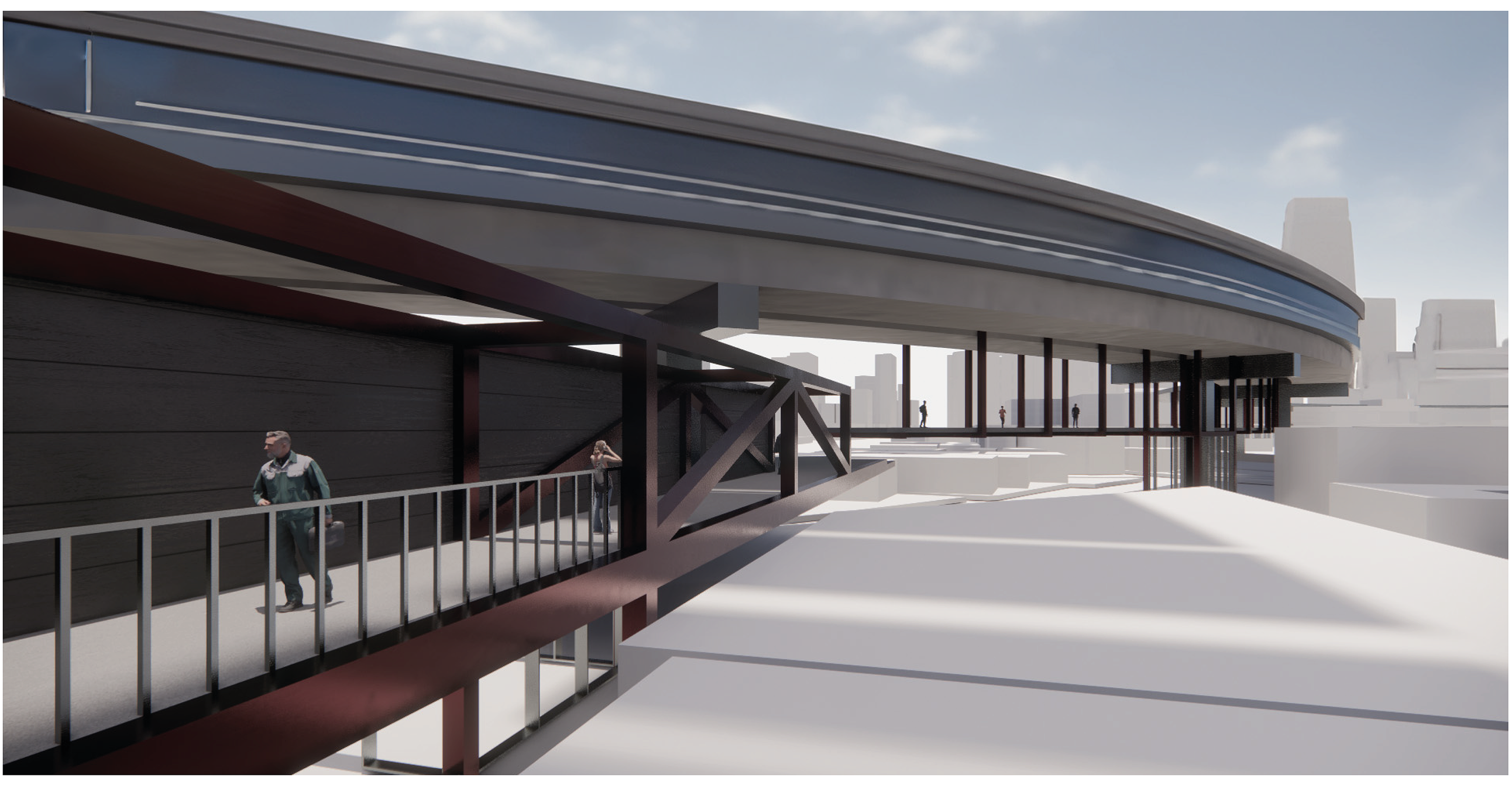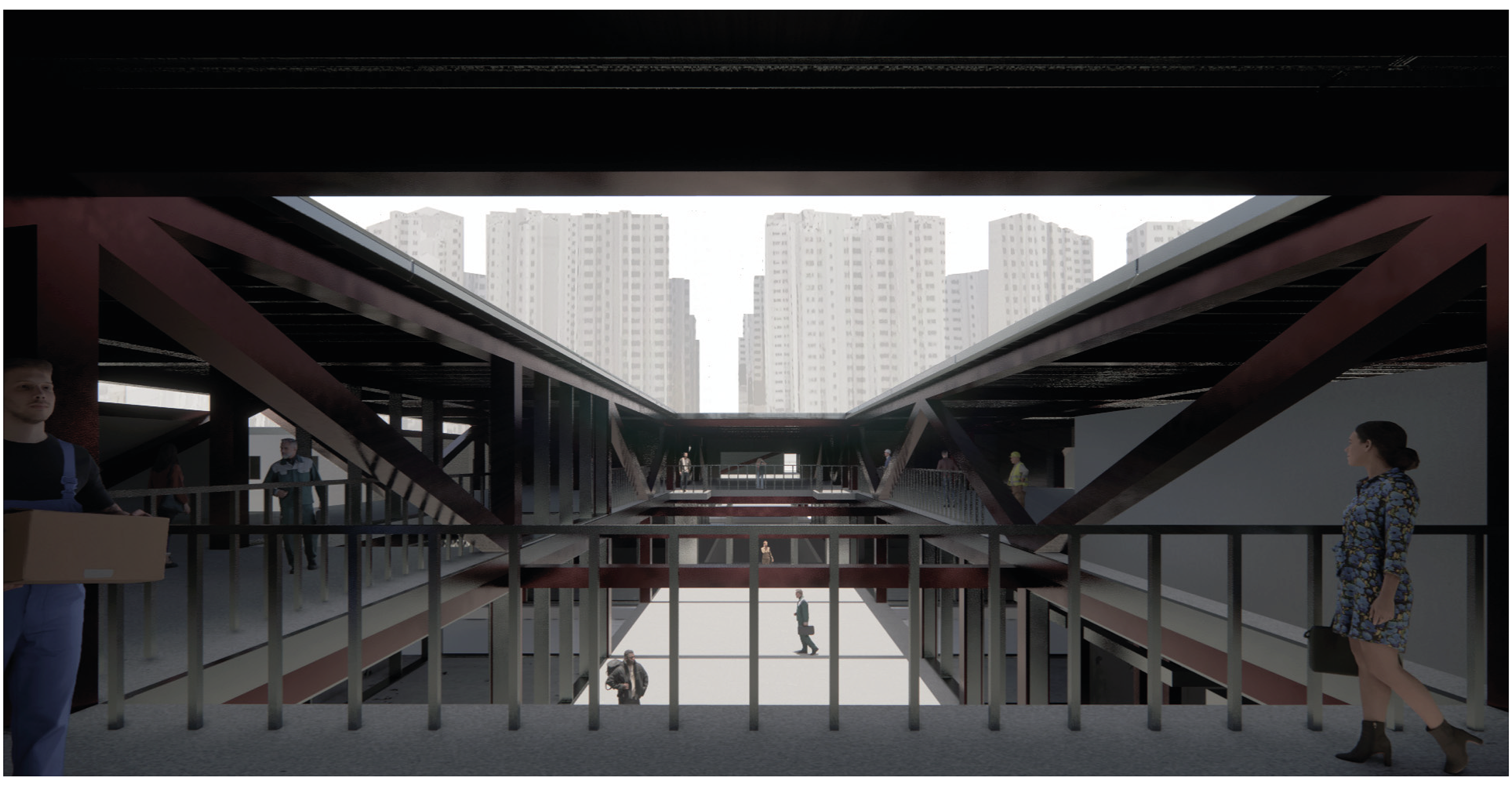유상엽_21세기 마치코바, 고철의 재개발
철로를 중심으로 발달한 영등포는 공업과 거주가 혼재한 도시다. 인접한 양천구, 혹은 (영등포에 포함되어 있지만) 바로 옆에 있는 여의도와 달리 지역을 운영하는 공업이 철로 부근의 중앙에 위치하기 시작했고, 그 주변으로 거주군이 형성되어 출퇴근하는 사람들이 자연적으로 이동하며 지역 생태계가 정의되었다. 계획적으로 배치된 아파트가 아닌 폭 1.5m 이하의 간격으로 단독주택이 밀집한 거주지역이 영등포 전반에 걸쳐 분포한 건 그러한 이유다. 합판과 슬레이트, 그리고 벽돌로 서툴게 마감된 거주지역 주변으론 아침 6시부터 저녁 6시까지 12시간 근무하는 통상적인 공장 스케줄에 맞추어 저녁시간에 편중된 유흥업소가 상업시설로 발전했다.
영등포의 정착은 일제 강점기 이후, 현재의 철공소의 모태가 되는 ‘마치코바’가 있었기에 가능한 일이었다. 일본 주민들이 떠난 후 한국인들은 센반을 가지고 폐허를 재가공하여 집을 짓고 일상용품을 만들었다. 소재만 확보되면 어떤 부품도 2-3일 안에 만들어냈다. 마치코바는 영등포 일상의 곳곳으로 파고들어 공업과 거주를 일구어냈다. 일반적인 도시계획으로 생겨난 주거단지와 다르게 합판과 슬레이트로 약하게 지어진 유사 한옥 양식의 주택들이 벽돌로 마감된 채 심각하게 노후화되어 영등포 곳곳에 아직까지 슬럼으로 분포해 있는 이유다.
산업과 거주지역은 영등포에 같이 들어선 것만큼이나 변화 또한 같이 이루어졌다. 대형 공장들이 사라지자 그 자리에 계획거주지가 들어섰다. 아파트 단지 사이로 노후화된 거주지역들만 남았다. 대형공장들이 사라지고 처음의 마치코바, 철공소들만 남았다.
필자는 산업과 거주 양쪽의 남겨진 지역들을 하나로 이을 수 있는 ‘21세기 마치코바’를 제안한다. 이 ‘영등포 마치코바’는 쪽방촌에 위치한 고철상이 수집한 폐철과 기존의 영등포 철공단지, 공장 사이사이의 유휴공간에 지어져 떨어져 있던 공장을 연결한다. 이렇게 형성된 횡적 네트워크는 사실상 서로 독립된 공장들을 하나의 유기체처럼 작동하도록 유도한다. 모아진 폐철은 네트워크 속에서 재가공, 조립되어 노후화된 주거지역을 보수하고 커뮤니티 시설을 건축하는 데 활용된다.
Yeongdeungpo, developed around the railway, is a city where industry and residential areas coexist. Unlike adjacent Yangcheon-gu, or Yeouido (which is included in Yeongdeungpo but located right next to it), the central industrial operations began near the railway, surrounded by residential areas. This natural migration of people for commuting defined the local ecosystem. Instead of planned apartment complexes, densely packed single-family homes with less than 1.5 meters of space between them are spread throughout Yeongdeungpo for this reason. Around these residential areas, which are crudely finished with plywood, slate, and bricks, entertainment establishments have developed as commercial facilities, catering to the typical factory schedule of 12-hour shifts from 6 AM to 6 PM, resulting in a concentration of activity in the evenings.
The settlement of Yeongdeungpo was made possible after the Japanese colonial period due to the presence of 'machikoba,' the forerunners of today's ironworks. After the departure of Japanese residents, Koreans used lathes to reprocess the ruins to build homes and everyday items. Any part could be manufactured within 2-3 days once materials were secured. Machikoba permeated Yeongdeungpo's daily life, fostering both industry and residential areas. Unlike residential complexes created through general urban planning, weakly constructed pseudo-Hanok style houses made of plywood and slate, and finished with bricks, have severely aged and are still distributed as slums throughout Yeongdeungpo.
As industry and residential areas were established together in Yeongdeungpo, they also transformed together. When large factories disappeared, planned residential areas took their place, leaving only aging residential areas among apartment complexes. The large factories are gone, and only the original machikoba and ironworks remain.
I propose a '21st Century Machikoba' that can connect the remaining industrial and residential areas. This 'Yeongdeungpo Machikoba' will be built using scrap metal collected by junk dealers in the shantytowns, utilizing idle spaces between existing ironworks and factories. This horizontal network will effectively lead to independently operated factories functioning as a single organism. The collected scrap metal will be reprocessed and assembled within the network, used to repair deteriorated residential areas, and build community facilities.

